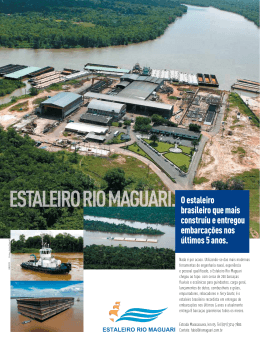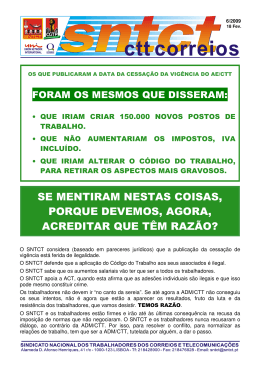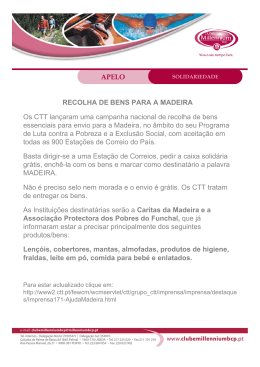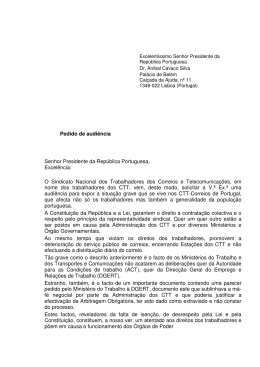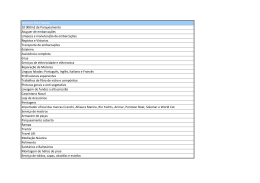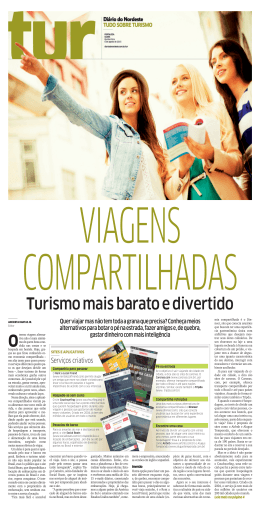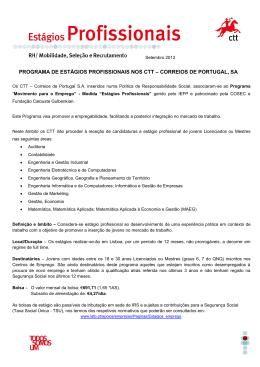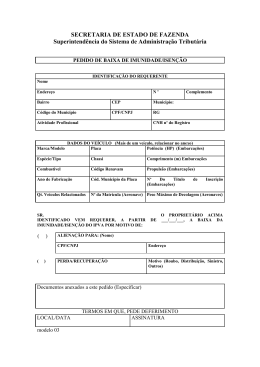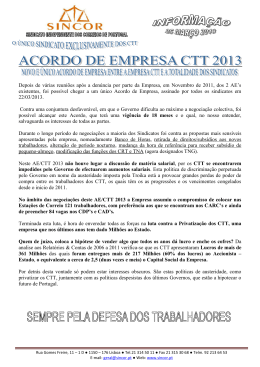2015 MEDITERRANEAN BOATS Dados Técnicos / Technical Data Located on the south-western edge of Europe, Portugal was classified as a border country by geographer Orlando Ribeiro. Boats travelling from the Atlantic Ocean and the Mediterranean Sea, which had been visiting the country since ancient times, strongly influenced Shipbuilding, leading Portuguese shipwrights to adopt two distinct techniques: Nordic clinker planking (overlapping planks and an end structure) and Mediterranean smooth planking (a front structure and juxtaposed planks). The Douro River represents the cultural frontier that separated the two aforementioned styles, with Nordic-style boats prevailing in north-western rivers. To the south, and along the coast, Mediterranean-style boats dominated. In addition to this cultural duality, barges and other boats boasting markedly Mediterranean features were commonly found in the Algarve, particularly in the coastal areas closest to neighbouring Andalusia, of which the most representative examples are the Calão and the Xávega. The latter has not been included in this stamp issue, as it is already featured in the “Portucale 77- Barcos da Costa Portuguesa” (Portucale 77 – Portuguese Coastal Boats) issue, launched in 1977. Both these boats bear traces from ancient Phoenician and Greek vessels, mostly evident in their bow decorations. Both boats feature a raised piece on the bow, hornshaped in the Calão and in the shape of an elongated, stylised swan neck in the Xávega. Both boats feature barge-like hulls, without transoms. The Calão was propelled by oars or sails, whereas the Xávega was only propelled by oars. Although both were trawlers, the Calão also assisted larger ships engaged in deep sea fishing, namely tuna fishing, and transported fish to the shore. The Canoa do Alto or Caçadeira, the Canoa da Picada and the Caíque were seagoing boats. The optimal performance afforded by their hulls inspired the building of recreational boats, widely used in regattas from the 19th century onwards, particularly by the Portuguese Royal House. The Canoa da Picada carried salted sardines to the port of Lisbon; its leisure version, rigged differently, was known as coquette. The Caíque, a fishing boat also used in port-to-port shipping, sailed on Moroccan waters and the Western Mediterranean. The “Bom Sucesso” (Good Fortune), a boat from Olhão, crossed the South Atlantic to take the news of the expulsion of Napoleon’s armies from Portugal to the Royal Family, exiled in Brazil. The Galleon was introduced to the Algarve from Andalusia, to sail the high seas. This boat was soon replaced with a steam version and since then reconverted, to be used in the transport of salt. Its excellent performance on the high seas led a few sailing enthusiasts, namely from the Netherlands, to buy these boats and turn them into sports and pleasure craft. The five boats depicted in this stamp issue portray Mediterranean traditions, not only regarding shipbuilding techniques but also in what concerns their origins. Emissão / issue - 2015 / 07 / 09 Selo / stamp €0,45 – 155 000 €0,72 – 145 000 €0,80 – 115 000 Bloco / Souvenir sheet €1,80 – 40 000 Ilustrações / Ilustrations Carlos M. Carvalho Papel / paper - FSC 110 g./m2 Formato / size selos / stamps - 40 x 30,6 mm bloco com 1 selo / souvenir sheet with 1 stamp - 125 x 95 mm Picotagem / perforation Cruz de Cristo / Cross of Christ 13 x 13 Impressão / printing - offset Impressor / printer - INCM Folhas / sheets - com 50 ex. / with 50 copies Sobrescritos de 1.º dia / FDC C6 – €0,56 C5 – €0,75 Pagela / brochure - €0,70 Obliterações do 1.º dia em First day obliterations in Loja CTT Restauradores Praça dos Restauradores, 58 1250-998 LISBOA Loja CTT Município Praça General Humberto Delgado 4000-999 PORTO Loja CTT Zarco Av. Zarco 9000-069 FUNCHAL Loja CTT Antero de Quental Av. Antero de Quental 9500-160 PONTA DELGADA Encomendas a / Orders to FILATELIA Av. D. João II, n.º 13, 1.º 1999-001 LISBOA Colecionadores / collectors [email protected] www.ctt.pt www.facebook.com/FilateliaCTT O produto final pode apresentar pequenas diferenças. Slightly differences may occur in the final product. Design: Design&etc / Hélder Soares Impressão / printing: Futuro Lda. Barcos do Mediterrâneo Situado no extremo sudoeste da Europa, Portugal é um País de charneira, como o classificou o geógrafo Orlando Ribeiro. Visitado por embarcações das culturas atlântica e mediterrânica desde a mais remota Antiguidade, as influências na Arte da Construção Naval levaram os nossos carpinteiros de ribeira a absorver os dois métodos construtivos: o nórdico de tabuado trincado (tábuas sobrepostas e estrutura no final) e o mediterrânico de tabuado liso (estrutura inicial e tábuas justapostas). O rio Douro foi a fronteira entre estes dois métodos e em todos os rios do noroeste persistiu a construção nórdica. Para sul, e na totalidade da nossa costa, foi a tradição mediterrânica que se impôs. Para além desta dualidade cultural, verificou-se na costa algarvia, nomeadamente na faixa litoral mais próxima da Andaluzia, a introdução de tipologias marcadamente mediterrânicas da família das barcas e não só. As mais significativas são o calão e a barca da xávega, esta última não está representada nesta emissão filatélica por já ter sido retratada em 1977 na emissão Portucale 77 - Barcos da Costa Portuguesa. A ancestralidade destas duas embarcações verifica-se principalmente na forma das decorações da proa. Em ambas temos esporões, sendo no primeiro caso em forma de corno erguido e no segundo um beque alongando-se em cabeça de cisne estilizada, vestígios prováveis de embarcações fenícias ou gregas. Os cascos são sem painel de popa do tipo barca. O calão tanto se movia a remos como à vela e remos, e a barca exclusivamente a remos. Ambos se dedicavam à arte xávega, mas o calão também era usado como auxiliar das armações do atum e como enviada do pescado de embarcações de maior porte da pesca do alto. A canoa do alto ou caçadeira, a canoa da picada e o caíque foram embarcações veleiras de alto mar. As óptimas características dos seus cascos deram origem a embarcações de recreio usadas em regatas, nomeadamente pela Casa Real Portuguesa desde o século XIX. A canoa da picada transportava sardinha salgada para o porto de Lisboa e a sua versão de lazer, com plano vélico modificado tomou a designação de coquette. O caíque era uma embarcação de pesca também usado na cabotagem, quenavegava até águas marroquinas e do Mediterrâneo Ocidental. O Bom Sucesso, de Olhão, atravessou o Atlântico Sul até ao Brasil para levar à exilada Família Real a notícia da expulsão dos exércitos napoleónicos de Portugal. O galeão foi introduzido no Algarve a partir da Andaluzia para ser usado na arte do galeão. A sua duração foi curta, tendo sido substituído por uma versão a vapor e, desde então, reconvertido para o transporte de sal. As óptimas aptidões para a navegação em alto mar levaram alguns velejadores, nomeadamente holandeses, a adquiri-los para os adaptarem ao desporto e lazer náuticos. As cinco embarcações representadas nesta emissão filatélica refletem tradições mediterrânicas, não só pelos métodos de construção como pelas suas origens.
Download
